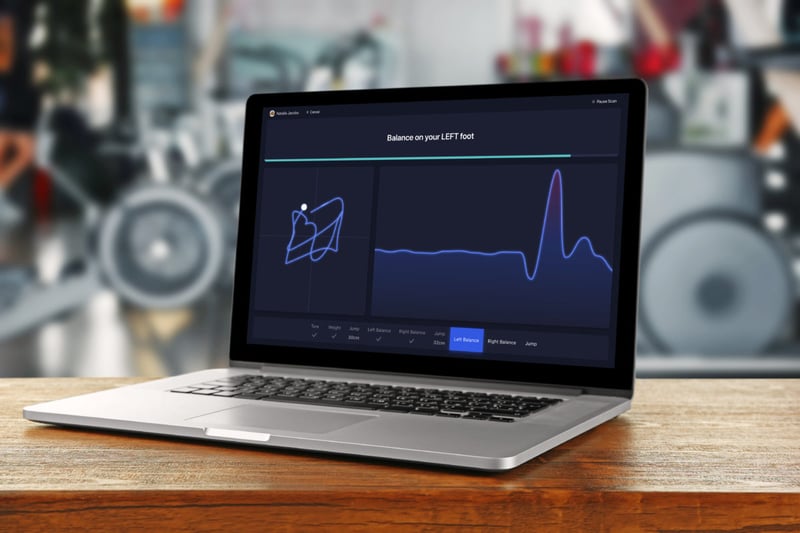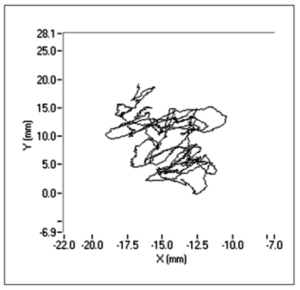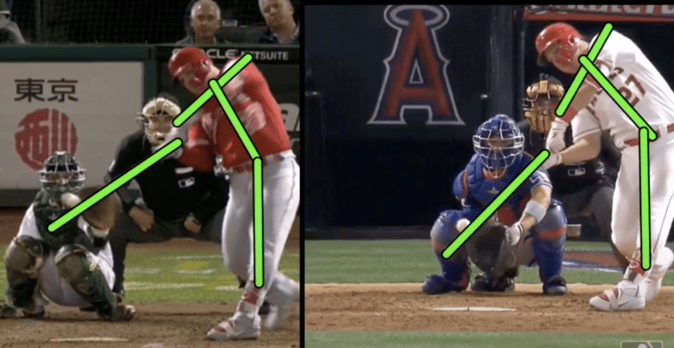
At a glance, balance can seem like a rudimentary test. We don’t see balance glamorized on social media like a 47.1” vertical jump where the subject seems to levitate momentarily. But, testing balance on a force plate provides us with an opportunity to collect more data for longer periods of time than a test like the vertical jump. Let’s take our Balance Scan, which is performed on a 1000Hz force plate with four sensors for a total of 80 seconds. During this time, we can collect up to 320,000 data points which are then stored and run through machine learning models in real-time to provide valuable insights about injury, movement disorders, and performance. Let’s dive deeper…
Balance can be simply understood as an individual’s ability to maintain their center of mass over their center of pressure. While this may sound basic, it is actually an extremely complex coordination of several different systems that allow us to balance. Humans’ basic ability to stand upright on two feet (let alone on one) is a complicated and unstable condition Gravity is constantly acting on the human body, challenging our balance. Therefore, different systems of the human body coordinate to counteract these forces and maintain balance. Our nervous system, musculoskeletal system, vestibular system, and ocular (vision) system all work in a coordinated effort to simply allow us to stand upright or walk without falling over. Even in a typical upright dual stance (two feet), there is a measurable amount of “sway” or center of pressure movement in healthy individuals. To further display the complex coordination of systems, research has shown that simply removing vision (blindfold/eyes closed) significantly increases this movement or sway, even in a dual limb stance.

Perhaps one of the simplest measures from balance tests, the total amount of movement or postural sway, is often discussed in research (see sway path image above), and can even be split into multiple different parts. For example, the overall movement or sway path can be dissected into medial-lateral sway (side to side) and anterior-posterior sway (front to back). These variables can be further evaluated as sway velocities by measuring the amount of movement (sway path) by the test’s total time, giving us more information about the timing of forces during balancing tasks.
Another critical piece of information that can be measured during balancing tasks is often referred to as variability or complexity. This is an interesting concept as it relates to movement, as one might assume more variability (meaning less consistency) in movement is a bad thing. But research suggests that more skilled individuals and healthier individuals actually show greater variability or complexity in many cases. This concept of complexity holds true in a variety of measures of the complex human system, for example, heart rate variability. More variability or complexity is better as it represents a more automated process or unconscious task.
This concept, as it relates to movement, can be a bit more easily digested by understanding that greater complexity in how a movement is performed doesn’t necessarily mean greater variability in the end result of a movement. For example, if a baseball player takes the same exact swing on the same plane at every pitch, he will swing and miss much more often than if there is greater variability or complexity in his swing. The best hitters adjust their swing to make contact with sinkers, curveballs, and changeups alike. It is their lack of consistency, or their ability to add complexity to their swing that makes them successful as hitters.

Countless studies have measured and analyzed different variables related to balance and have reported on a variety of reliable and valid measures. A 2015 research study out of the University of Calgary assessed single limb measures of balance and found significantly greater medial-lateral sway in a population of individuals with a previous knee injury than that of a healthy cohort of individuals. The injured group also recorded a lower variability of sway compared to uninjured individuals. Those less consistent, or perhaps better thought of as the group with more complex coordination of balance, represented the healthier group of individuals. A 2006 study found single leg balance to be a significant predictor of an ankle injury in basketball athletes, with a 2012 meta-analysis supporting. It concluded that postural sway is associated with a significantly increased risk of ankle injury. A 2019 study found in their analysis that anterior-posterior sway was higher in concussed individuals three days post-concussion but had returned to baseline at the 21-day mark. However, measures of complexity continued to be lower for individuals in the concussed group for up to 90 days post-concussion!
The research also suggests that balance is a fundamental element of performance. Evidence from multiple sports demonstrates significant correlations between balance ability and agility, strength, and competitive level. Objective measures of balance have great utility for practitioners both identifying at-risk individuals and providing feedback post-injury or surgery during the rehabilitative process. Balancing tasks have long been utilized for concussion testing in sport, but their application goes far beyond athletics. Variability has shown to be a valid marker for a multitude of other diseases and disorders such as multiple sclerosis, scoliosis, Parkinson’s disease, and fall risk. The interaction between both quantitative output and qualitative strategy measures of balance gives us the best insight into an individual’s current status.
The complexity of human movement is difficult to measure in a reliable and practical way. Balance tests can meet these demands because of both the simplicity of performing the tests and the coordinated complexity of merely standing upright. Center of pressure measures of ground reaction forces provides insight into both global measures of how well someone is able to balance and a more complete understanding of how they complete that task. As a result, balance tests can be utilized reliably and practically to better understand the complexity of human movement.